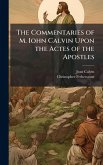Volume 3 of Jean Calvin's âCommentaries on the Four Last Books of Moses, Arranged in the Form of a Harmonyâ offers profound insights into the books of Exodus, Leviticus, Numbers, and Deuteronomy. Presented in a harmonious structure, this volume continues Calvin's meticulous analysis, providing a valuable resource for theologians, historians, and anyone interested in understanding the foundations of Western religious thought. Translated and edited by Charles William Bingham, this edition makes Calvinâ(TM)s seminal work accessible to modern readers, preserving the depth and rigor of the original text. Calvinâ(TM)s commentaries are renowned for their careful exegesis and theological precision, making this volume an essential addition to any theological library. This work has been selected by scholars as being culturally important, and is part of the knowledge base of civilization as we know it. This work was reproduced from the original artifact, and remains as true to the original work as possible. Therefore, you will see the original copyright references, library stamps (as most of these works have been housed in our most important libraries around the world), and other notations in the work. This work is in the public domain in the United States of America, and possibly other nations. Within the United States, you may freely copy and distribute this work, as no entity (individual or corporate) has a copyright on the body of the work. As a reproduction of a historical artifact, this work may contain missing or blurred pages, poor pictures, errant marks, etc. Scholars believe, and we concur, that this work is important enough to be preserved, reproduced, and made generally available to the public. We appreciate your support of the preservation process, and thank you for being an important part of keeping this knowledge alive and relevant.
Bitte wählen Sie Ihr Anliegen aus.
Rechnungen
Retourenschein anfordern
Bestellstatus
Storno








